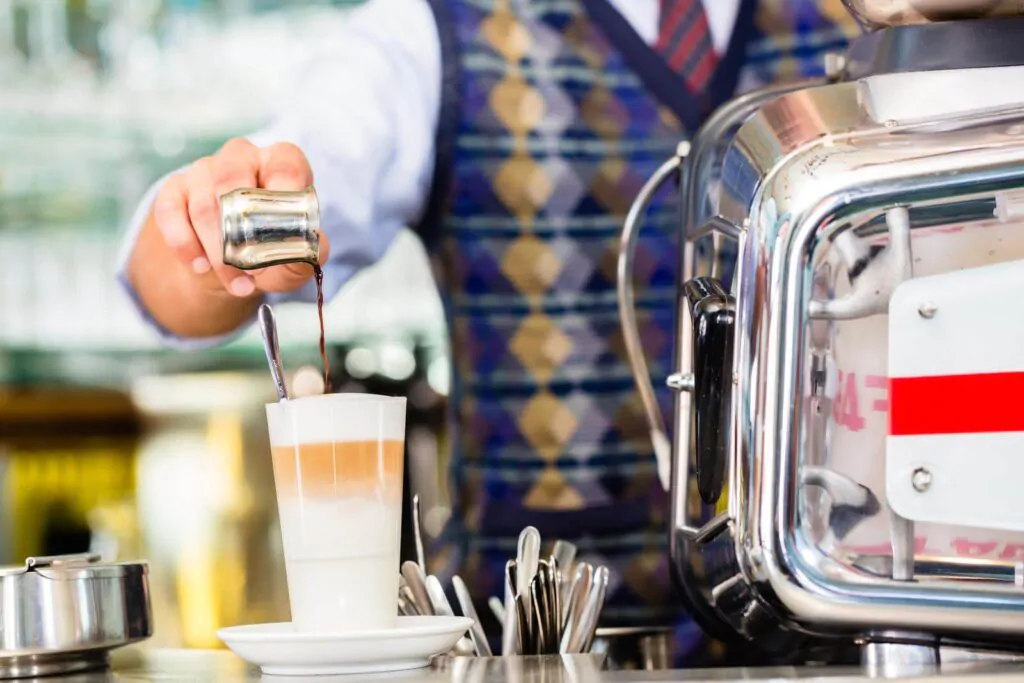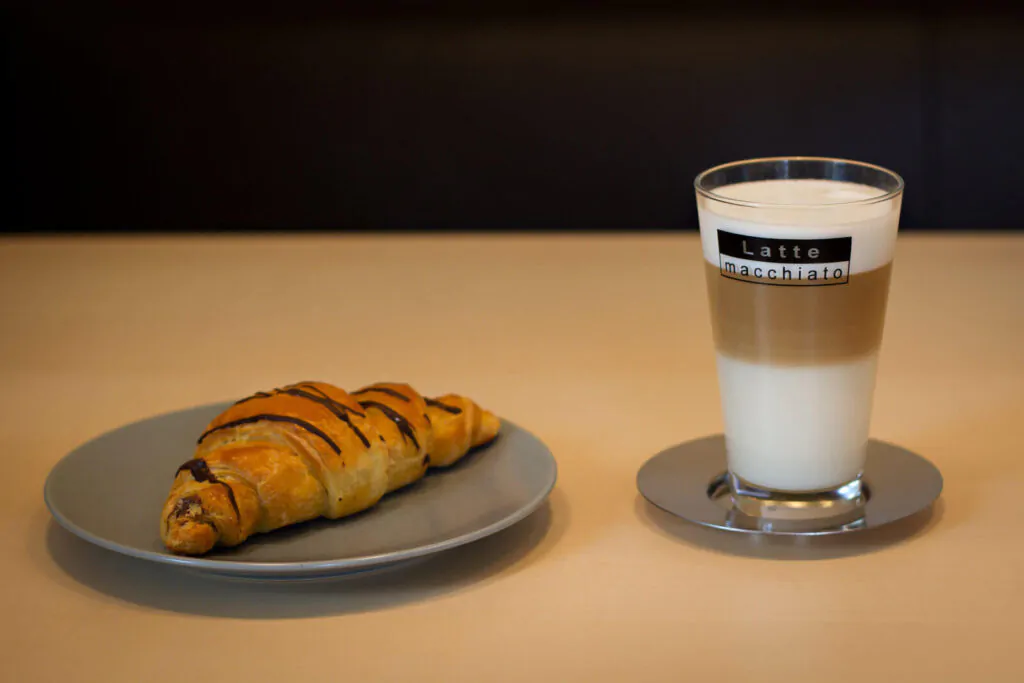Do you mix a macchiato? Whether you make a macchiato at home or are curious about your favorite coffee, do not mix macchiatos for the best coffee experience.

Macchiatos, lattes, cappuccinos, americanos, and more, the list of different coffee beverages goes on and can be confusing. You might be wondering are you supposed to mix a macchiato?
To understand your favorite coffee drink better and the proper way to enjoy it, I’m going to break down the definition of a macchiato and where it originated from and explain why you should not mix a macchiato.
Let’s dive into the technicalities behind combining espresso and milk that the world so desperately needs when they wake up every morning.
Are you supposed to mix a macchiato?
The answer is no, do not mix a macchiato. Macchiato layers make the drink unique, so the ombre of white to dark brown is the ideal look of a macchiato. The layers are supposed to be sipped in order, so mixing them essentially ruins the drink’s design.
Macchiatos have a history that explains why they should not be mixed. People often confuse macchiatos with lattes, but they are technically different beverages containing almost the same ingredients.
Two Types of Macchiatos
There are two main ways to make a macchiato: latte or espresso.
Macchiato Latte

Caramel macchiatos are one of the most popular coffee drinks at the moment. They combine espresso shots with foamed milk or cold milk.
The steps to make it start with milk, or milk and ice if making an iced macchiato. The espresso shots, usually two, are poured on top of the milk, so they sit towards the top of the cup. If it is a caramel macchiato, there is caramel drizzled in a crosshatch pattern over the top.
This creates an ombre design where the top of the drink is dark from the espresso and caramel and gets lighter as you move toward the bottom, which is just white milk. The layers should be sipped in order, from sweet caramel to bold espresso to light and creamy milk.
Espresso Macchiato
Espresso macchiatos consist of a dollop of foamed milk and one or two espresso shots. Sometimes hot milk or cold milk is used in place of the foamed milk depending on the individual’s preference.
Espresso macchiatos are served in small espresso cups and traditionally enjoyed by those that want the flavor of espresso slightly subdued by the creamy sweetness of the milk.
Learn how to make espresso with cold milk drinks at home.
Macchiato vs. Latte
Macchiatos typically only use foamed milk and espresso, while lattes incorporate espresso, steamed milk, and foamed milk layered in that order.
The most common technique for macchiatos is to dump the espresso shots from the top of the drink rather than putting espresso at the bottom of the cup. Therefore, an upside-down latte is very similar to a macchiato and vice versa.
The noticeable difference in flavor is the milk to espresso ratio. Macchiatos have about a 2-1 milk espresso ratio. But lattes are closer to a 3-1 ratio, satisfying those that want a lighter, sweeter beverage.
Origins of the Macchiato

In Italian, the word macchiato means “spotted” or “stained.” So the word translates to “stained coffee” because of the drips of dark espresso that sink into the white milk.
The exact origins aren’t crystal clear, but many believe macchiatos came about in Italy in the 1980s to differentiate between lattes and drinks with more espresso.
If you want to learn more, read our guide to the history of Italian coffee.
The rules of coffee in Italy are complicated, so these slight differences in technique result in entirely different drinks
.
